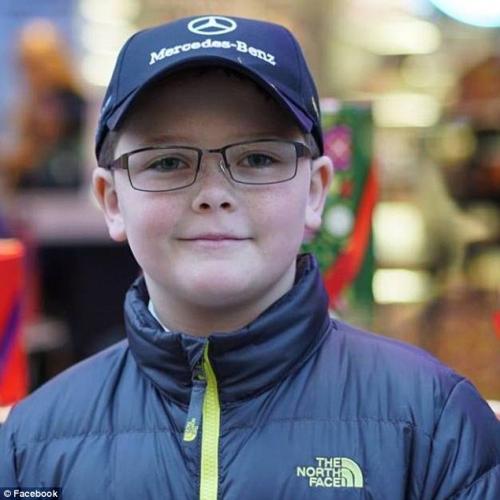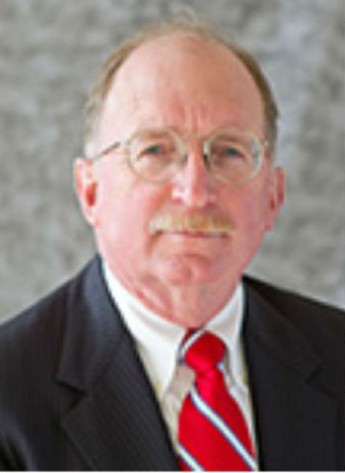
kscarbel2
Moderator-
Posts
18,881 -
Joined
-
Days Won
114
Content Type
Profiles
Forums
Gallery
Events
Blogs
BMT Wiki
Collections
Store
Everything posted by kscarbel2
-
Hino Trucks Australia / January 27, 2016
-
Today’s Trucking / December 16, 2015 First revealed at the Mid-America Trucking Show in March, Dana's Dual Range Disconnect drive axle system gives users the fuel savings benefit of a downsped 6x2 drivetrain as well as the traction and performance benefits of conventional 6x4 setup with a mid-range axle ratio. How's that possible you ask?
-
Today’s Trucking / November 11, 2015
-
Today’s Trucking / October 22, 2015 True zero-emissions freight transportation is closer to reality than you might think. A California-based technology company called TransPower USA (http://www.transpowerusa.com/) has five Class 8 tractors in service now working out of the Port of Long Beach. The company also has several yard shunt tractors and school buses in real-world service.
-
Autoblog / Automotive News Links: http://www.autoblog.com/new-york-auto-show/ http://www.autoblog.com/2016/03/24/2016-new-york-auto-show-recap/ http://www.autonews.com/section/asnewyork
-
March 20, 2016
-
Jeep design head Mark Allen on the Jeep FC 150 concept truck
kscarbel2 replied to kscarbel2's topic in Odds and Ends
2005 Wrangler-based Jeep Gladiator Concept -
Jeep design head Mark Allen on the Jeep FC 150 concept truck
kscarbel2 replied to kscarbel2's topic in Odds and Ends
-
Jeep design head Mark Allen on the Jeep FC 150 concept truck
kscarbel2 replied to kscarbel2's topic in Odds and Ends
-
http://www.caranddriver.com/features/2015-mclaren-650s-spider-tested-feature-waze-is-cool-and-mclarens-are-fast-page-2 https://www.waze.com/
-
Scania Group Press Release / March 1, 2016 Scania is launching its most powerful marine engine ever at the Dubai International Boat Show this March. The compact 16-litre V8 engine delivers 1,200 hp and boasts low weight and unsurpassed fuel economy, allowing for a significantly increased range of operation. Scania’s pleasure-craft engine is based on the company’s modular system, which has been developed over the past 50 years. It guarantees reliability and availability, as well as simplifying service and reducing the need for spare parts. “This new V8 can provide the powerful heart needed in high-speed pleasure craft, regardless of whether they have a propeller or are driven by waterjet,” says Joel Granath, Senior Vice President for Scania Engines. “It’s the most powerful engine in Scania’s entire portfolio – the most outstanding that we have developed to date.” The new engine builds on Scania’s long and deep experience with marine installations and different applications. Scania’s V8 engines are well known for their unsurpassed power-to-weight ratios and powerful torque, something that gives boat owners the best acceleration in the class. The new pleasure-craft engine takes these characteristics a step further. The power ranges from 1000 through to 1200 horsepower. The Dubai International Boat Show takes place between 1 and 5 March and is primarily focused on large yachts and luxury boats. Scania will display both the new V8 and a 13-litre straight six cylinder, today capable of producing up to 750 horsepower.
-
When a standard series truck can‘t deliver the performance required for more demanding transportation operations, French specialized heavy haulage truckmaker Nicolas has the answer – “the Tractomas“. The 27-liter Caterpillar C27-powered Tractomas TR 10x10 has the highest tractive force in the world. With an empty weight of 40 tons, this monumental vehicle is capable of moving a convoy of about 700 tons. Sales Brochure - http://www.nicolas.fr/fileadmin/shared/Prospekte/Tractomas/Tractomas_GB.pdf
-
FYI
-
Good day to my fellow BMT members and truck enthusiasts! Since February 16, 2013, I have been using my corporate truck news feeds, in support of BMT’s ever growing popularity, to make the website’s “News” thread one of the best in the truck industry. As many know, the BMT has grown from a humble U.S. website into one with a truly global footprint. As a decades-long Mack Trucks alumni, and individual with immeasurable passion for the truck industry, it has been a genuine pleasure to donate my time each day. However, an issue arose on February 18 of this year. Primarily from my supporting the BMT news thread, I have used up my allotted disc space. As a result, I am no longer able to continue at the present time. It is in the nature of “news” that a supporting photograph, chart or other is often required. If I had only used my attachment capacity for personal posts on Mack history and other, I would still have an abundant amount of attachment space. I have contacted Barry Holden (website administrator) and kindly requested that, primarily in support of his website’s “News” thread, he consider providing me with attachment space once again so that I may resume posting the truck industry's latest developments. Providing BMT viewers with a comprehensive high-quality “one-stop” news thread has been a distinct pleasure. I am willing to continue........if provided with the means. Warmest regards, Kevin
-
WWII Autocar Wrecker
kscarbel2 replied to Swishy's topic in Antique and Classic Mack Trucks General Discussion
No, I'm just a regular guy who will always be a Mack man through and through. Under legends like Zenon C.R. Hansen, I had the best family with the best teachers in the truck industry......ever. "The bulldog is more than just a hood ornament. It represents the dynamic approach Mack has to business. It represents the strength and durability of its trucks, and the pride of its employees." Zenon C.R. Hansen "What Volvo has done, reduce an American icon down to a mere shell of its former self, should be a crime." -
WWII Autocar Wrecker
kscarbel2 replied to Swishy's topic in Antique and Classic Mack Trucks General Discussion
Please do post those pictures here...........all truck knowledge needs to be shared........particularly in the case of truck history so that it may never be forgotten. -
WWII Autocar Wrecker
kscarbel2 replied to Swishy's topic in Antique and Classic Mack Trucks General Discussion
My fellow BMT member, I have scanned the info that will support your friend's research. However, the website's system says I "have exceeded my allotted disk space for attachments". One of the core values of the BMT website, a key pillar that has allowed it to leap forward in popularity and become global in scope and viewership, is the exchange of knowledge. As inexpensive as disc space is today, it would be a shame for the website to plateau here. I will e-mail you the information (scanned photographs). But please post those four scans here so that all BMT viewers may benefit. I again want to emphasize that the ability to share such truck knowledge with all BMT viewers is the core element which has, up to now, allowed BMT to soar. -
KrAZ Trucks Press Release / February 11, 2016 On February 10, KrAZ Trucks held a ceremony at the company’s truck museum to honor its retired workers. The former employees, many over 80 years of age, were warmly greeted and presented with gifts as a token of the truckmaker’s continued appreciation. Meetings with retirees are regularly held at KrAZ Trucks thru the joint efforts of the Council of Veterans and plant management. Today the organization of retirees at the KrAZ plant is the largest of any employer in the city of Kremenchug, numbering over 5,000 people. Over 300 former employees annually receive material aid, gifts, and food packages on the anniversaries of Victory Day and International Women’s Day (March 8). In the case of elderly company veterans who require physical assistance, special transportation is arranged to transport the retirees to the company. In 2015, over 500 former employees who dedicated half of their lives to the truckmaker visited their former plant to see the latest developments and recall their achievements. A Russian proverb states “There is no future without past“. Young workers come up to take place of elderly laborers at KrAZ. Today, 28 percent of the company’s employees are below 34 years of age, and the average employee’s age is 45. The new generation of KrAZ employees adopts the life values and traditions of their predecessors, the veterans of the truck plant. This is why KrAZ Trucks is developing and progressing forward. KrAZ is proud not only of its trucks, but also of its employees. Our employees are our most valuable resource. .
-
- 1
-

-
Associated Press / February 16, 2016 An investigation that began after flames devoured a $4.5 million mansion led to a grand jury indictment Wednesday in the killings of three people from a prominent Washington family and their housekeeper. Darron Dellon Dennis Wint, 35, faces 20 felony charges, including first-degree murder while armed, burglary, kidnapping, extortion, arson, and theft, federal prosecutors said Wednesday. Wint, of Lanham, Maryland, is facing 555 years in prison after he was charged with brutally murdering 46-year-old Savvas Savopoulos, his wife Amy, 47, their 10-year-old son Philip and housekeeper Veralicia Figueroa, 57, before setting their house on fire on May 13, 2015. The list of indictments has revealed that he beat his victims with a baseball and then stabbed them with a samurai sword. Wint burned 10-year-old Philip Savopoulos alive, after knifing him. Guyanese-born Wint entered their home, kidnapped the family and extorted $40,000 from them as ransom before killing them. The grand jury in the D.C. Superior Court found the murders were 'especially heinous, atrocious or cruel.' The seventh charge on the indictment reads: 'While armed with a bat and other blunt force object and a sharp object (believed to be a samurai sword), in perpetrating and attempting to perpetrate the crime of kidnapping, as set forth in the second count of this indictment, killed Savvas Savopoulos by, among other things beating him with a bat and other blunt force object and stabbing him with a sharp object.' Wint entered the Northeast Washington D.C. home on May 13 and held the family and their housekeeper. After Mr Savopoulos' assistant dropped off $40,000 the following morning, the victims were killed and their bodies were found after the killers set the mansion on fire and fled. The adults all suffered fatal blunt force trauma before the blaze, while Philip died from sharp injuries and then burned to death. Police arrested Wint the next week after his DNA was allegedly found on a pizza crust at the scene, according to a source with knowledge of the investigation. Forensic analysis also matched traces of blood on Wint's shoe to at least one of the murder victims, two law enforcement officials said. .
-
Associated Press / February 17, 2016 The Indiana man who murdered his niece and her 4-year-old son in their Zionsville house was found dead in a downtown Indianapolis hotel room following a manhunt that began Wednesday morning. Officers were called to a home in the 6800 block of Old Hunt Club Road around 8:50 a.m. in rural Zionsville after a neighbor found the bodies of 31-year-old Katherine Janet Giehll and 4-year-old Raymond Peter Giehll. Police say Giehll and her son died from gunshot wounds. Authorities soon launched a manhunt for Giehll's uncle, 61-year-old Lucius Oliver Hamilton III, a Wabash College employee. “I will not stop until I find you. We have a great team assembled here, and we will find you," Boone County Sheriff Mike Nielsen said at a press conference. "And we will find you today. I suggest if you see this or if you hear this that you turn yourself in immediately.” Nielsen said the Boone County Sheriff's Office was collaborating with police in Zionsville, Whitestown and Lebanon as well as the Indiana State Police, U.S. Marshals Service and FBI. Around 3:30 p.m., Sheriff Nielsen said they tracked Hamilton to the Hilton Indianapolis Hotel and Suites in the 120 block of West Market Street downtown, and about 20 minutes later, he announced that Hamilton shot and killed himself inside a hotel room. Investigators believe the motive behind the killings was financial gain from a family trust. According to Indiana State Police, law enforcement officers knocked on the door, and Hamilton responded, “Yes.” Upon realizing it was law enforcement at the door, two shots were fired. “I could not be more proud of all the law enforcement officers involved today. Agencies from across the state, including our federal partners, offered every resource available to locate Hamilton. We were able to track Hamilton down to a specific location in downtown Indianapolis where he cowardly took his life instead of choosing to face justice for his actions. My heart goes out to the Giehll family and to the first responders that witnessed this horrific scene," said Sheriff Nielsen. .
-
BigMackTrucks.com
BigMackTrucks.com is a support forum for antique, classic and modern Mack Trucks! The forum is owned and maintained by Watt's Truck Center, Inc. an independent, full service Mack dealer. The forums are not affiliated with Mack Trucks, Inc.
Our Vendors and Advertisers
Thank you for your support!










